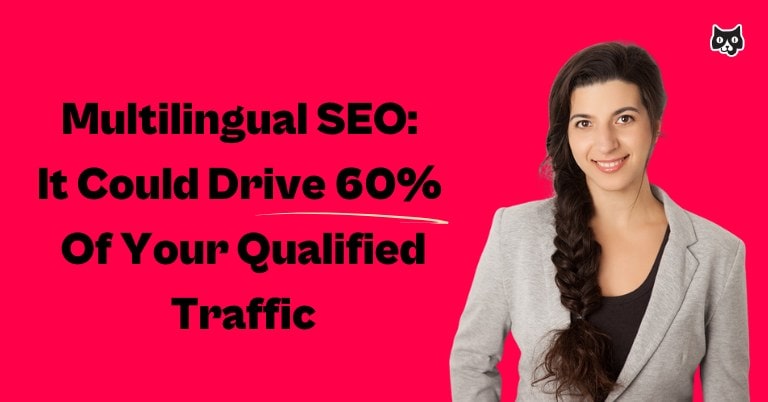Multilingual SEO allows you to reach more audiences organically, often with lower acquisition costs and competition levels.
For instance, Canva’s multilingual SEO strategy generates 62% of its organic traffic yet has only 10% of its backlinks. Wise’s multilingual strategy generates over 68% of its organic traffic yet has only 17% of its links.
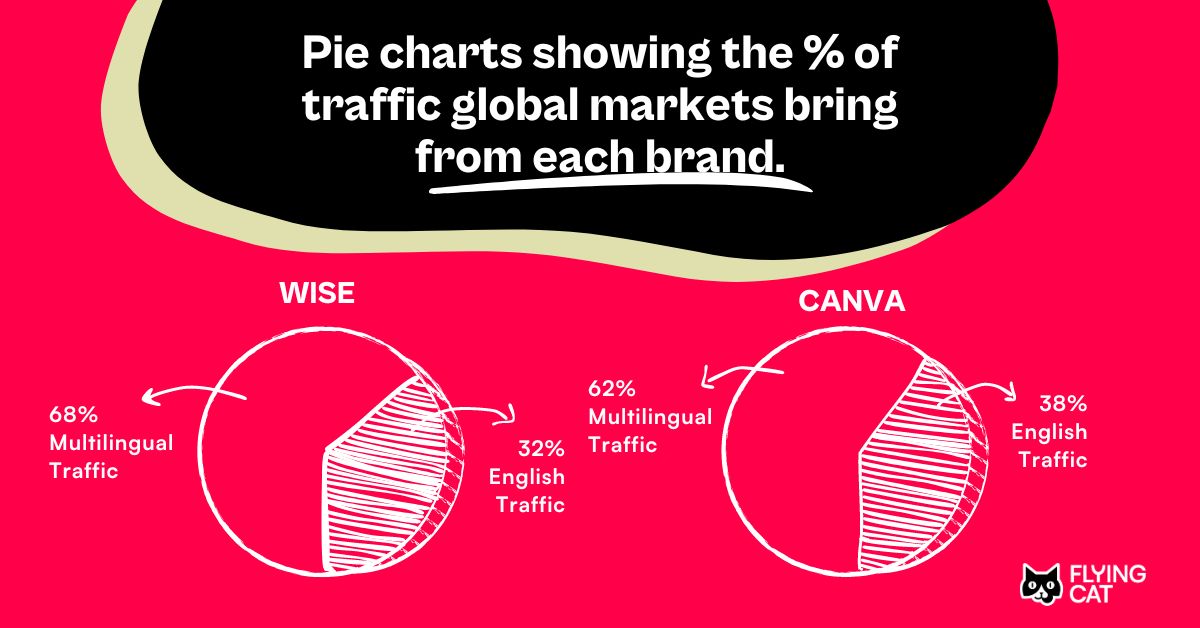
Without a multilingual strategy on their websites, both Canva and Wise would be leaving billions on the table and allowing competitors to steal their market share.
This post covers the 8 multilingual SEO best practices to consider if you want to grow your global visibility.
If you’d prefer to outsource your multilingual strategy to an agency specializing in all things international SEO, let’s chat.
Get a marketing consultation
What is multilingual SEO?
Multilingual SEO is a part of international SEO that focuses on optimizing a website for multiple languages. It takes a language-led approach to SEO and treats audiences who speak other languages as separate audience segments.
Many people consider multilingual SEO to be interchangeable with an international SEO strategy, but it’s not. Here’s why.
Multilingual SEO vs multi-regional SEO
International SEO does not always involve optimizing for other languages.
For example, consider an ecommerce store that targets the US, UK, Canada, and Australia. All its content will be in English. However, it may localize its content and SEO strategy for each region to show different pricing and shipping options.
This is an example of a multi-regional approach, even though it does not require translation for other languages and is still a part of international SEO.
On the other hand, multilingual SEO is about optimizing for various languages, regardless of how many regions a website is targeting.
For instance, a visa or migration lawyer may only operate in one country but create content hubs for various languages for the types of migrants they can help.
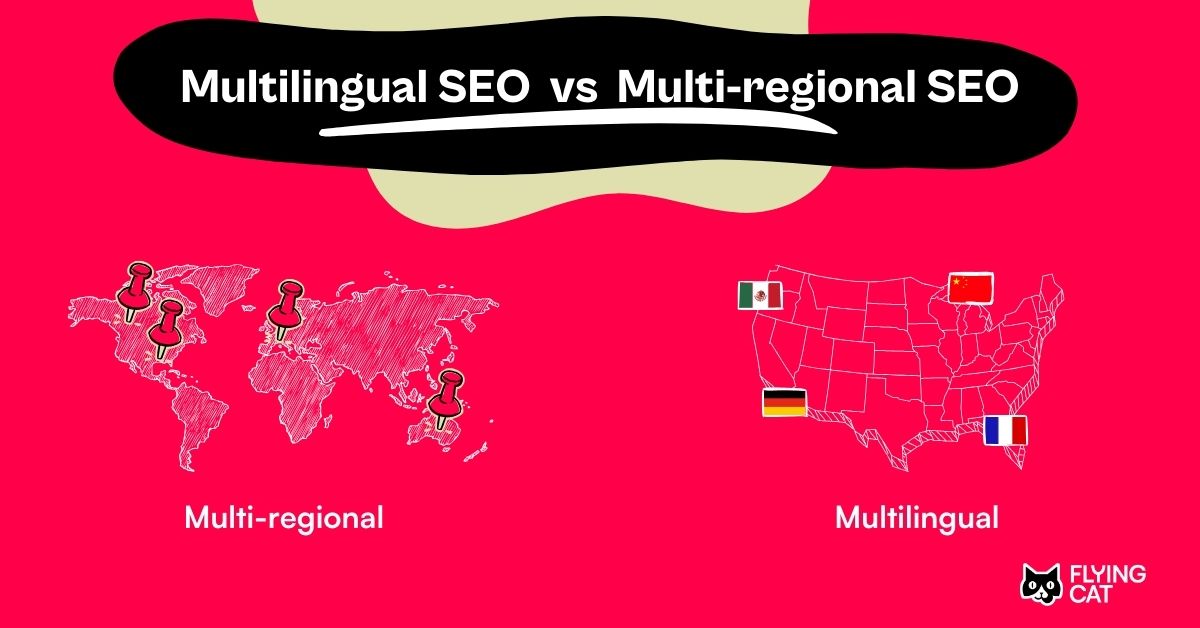
TL;DR, you can do multilingual SEO without targeting other regions and vice versa.
8 best practices of multilingual SEO
With AI tools and auto-translation apps flooding the market, it is very tempting to automate your multilingual strategy completely.
Sure, you’ll cut costs initially. However, there’s a bigger hidden cost that most organizations don’t see when they do this—opportunity cost.
The more you automate, the less genuine, intuitive, and nuanced your content becomes. In international markets, this means you’ll be leaving money on the table because locals may not understand or value your content if it doesn’t give them what they’re looking for.
Here are eight best practices to balance automating with AI and using native speakers to implement your multilingual SEO strategy.
1. Research your global markets and their dialects
The foundation of every multilingual SEO strategy starts by researching each market you want to target. You can use a tool like Ahrefs to find which markets have the biggest growth opportunity with SEO.
If you enter your main keyword into Keywords Explorer, you’ll get a breakdown of its popularity in many countries worldwide. For instance, here’s the breakdown for the keyword “logo design”:
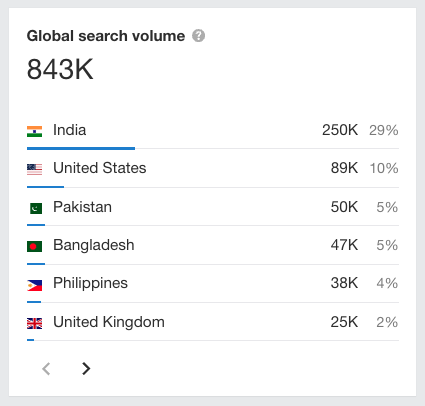
Using this data, you can decide which countries you will target in your multilingual strategy.
But don’t stop there. You’ll also need to research common and popular dialects for each country you deem relevant. For instance, there are an estimated 19,500 dialects and over 120 languages in India!
And dozens of Spanish-speaking dialects. Like, there are over 14 different ways you could say popcorn in Spanish, and the preference changes with each dialect:
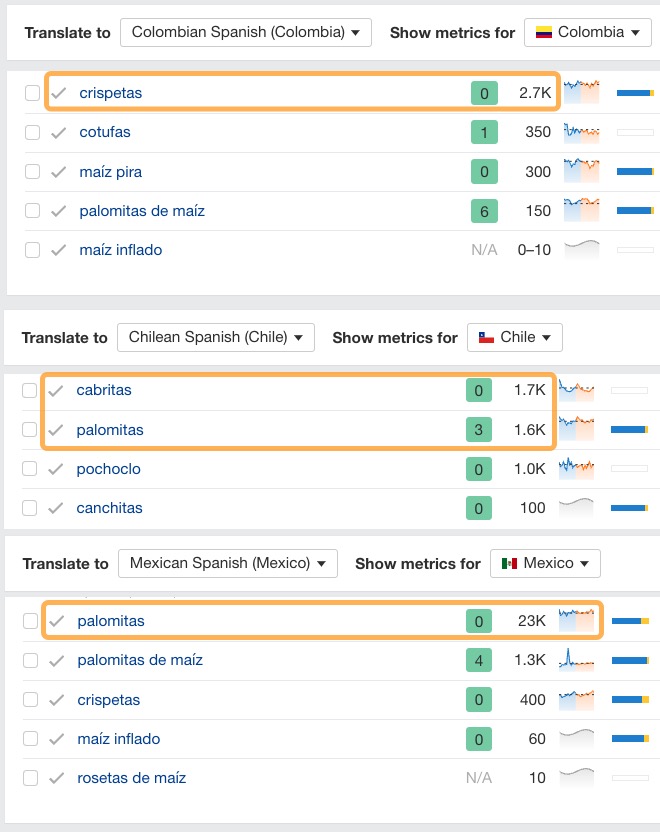
For this reason, the brands that succeed with their multilingual SEO strategy get very granular about the exact countries, languages, and dialects they’ll target.
This is crucial and will make or break your multilingual campaign, so don’t cut corners.
2. Leverage AI to fast-track your multilingual SEO strategy
While I advise against outsourcing your multilingual SEO strategy to AI completely, there are some efficiencies you can still gain with it.
For example, you could translate an entire keyword list in Google Sheets using its translation formula:
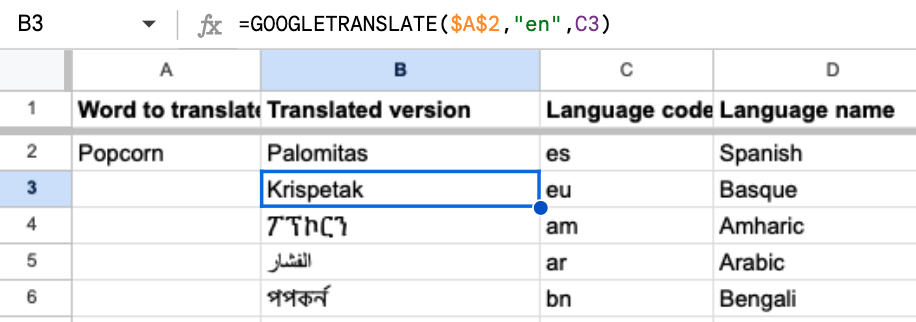
I love using this feature to also translate URLs in bulk so I can fast-track the keyword mapping process.
You could also try asking ChatGPT. It tends to do a better job of preserving local nuances and has more languages and dialects it can translate content to:
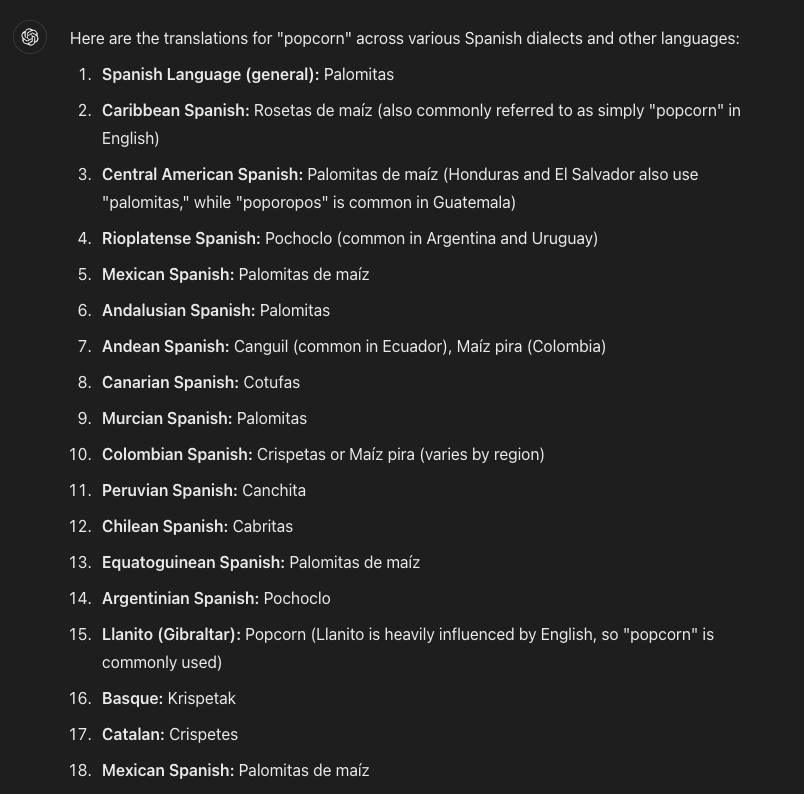
My favorite method, however, is to use Ahrefs’ AI translator. It’s like combining Google Sheets with ChatGPT, as it can translate an entire list with one click and preserve the local nuances.
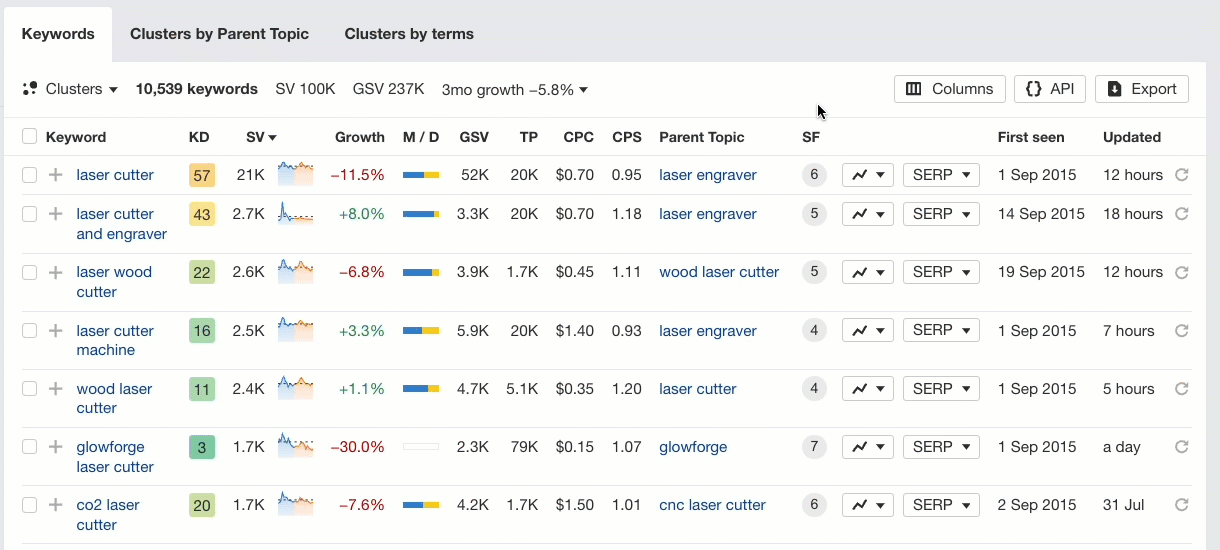
No matter which automation method you choose, it’s ideal to have a native speaker with SEO experience go through and select the final keywords you target.
The biggest mistake companies make when they outsource translations to AI is assuming the translation is good enough and will make sense to native speakers.
Just as you can easily spot when someone’s used AI to write English content, fluent speakers in other languages can do the same.
Don’t have a native SEO specialist on your team? Use ours.
Let’s chat about how our team can help you set up your multilingual SEO strategy for success.
Get a marketing consultation
3. Adapt your keyword research strategy for local search patterns
The best place to start keyword research for a new market is your existing keyword list in your primary language or market. That also extends to any existing pages you’ve created.
Flying Cat has found the best success by hiring native-speaking SEO professionals to conduct unique keyword research per market. Even when using a tool like Ahrefs, someone needs to map target locale keywords to specific pages and identify if a direct translation of existing content will do or if new content is needed.
This is mainly due to intent changes from one market to another.
For example, searches about “udon” in the US are predominantly about finding general information.
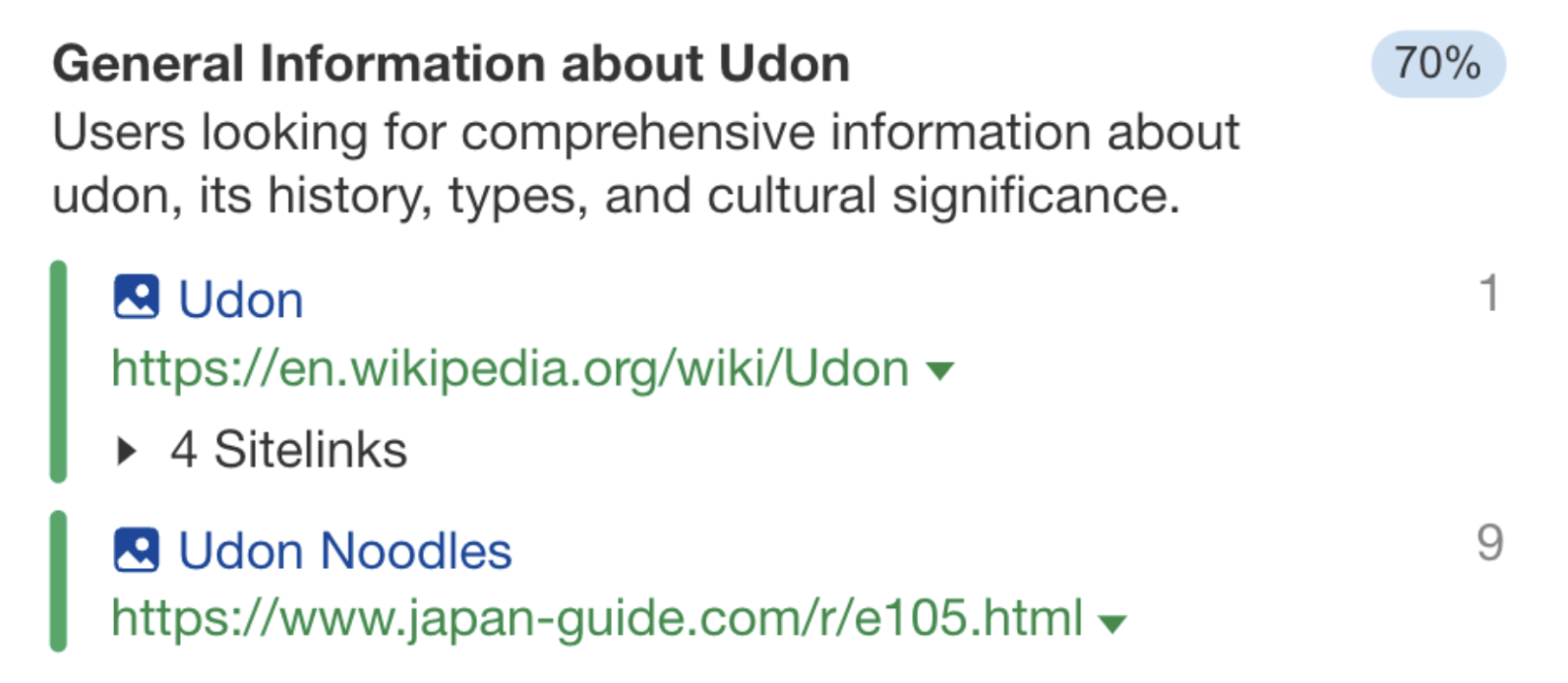
However, in Japan, 44% of results are about local restaurant chains selling udon dishes and 32% about making udon at home. This means this content could not be translated. Even if the Japanese translation of the English content were excellent, it would not match search intent.
In such cases, you’ll need to write new content aligning with each audience’s correct intent. For content where intent aligns in both languages, it’s always worth checking that all the sections within your current page make sense to both audiences.
Sometimes you may need to make minor edits to remove any localized lingo or examples that won’t resonate with speakers of another language.
4. Create each language as a separate hub in your site structure
Once you know what keywords you’re targeting and what pages you’ll have for each language, you’ll need to plan out where they fit in your site structure.
There are three main approaches to consider.
Subdomains
A subdomain allows you to create a separate website while using your main branded domain. The URL looks like us.yoursite.com.
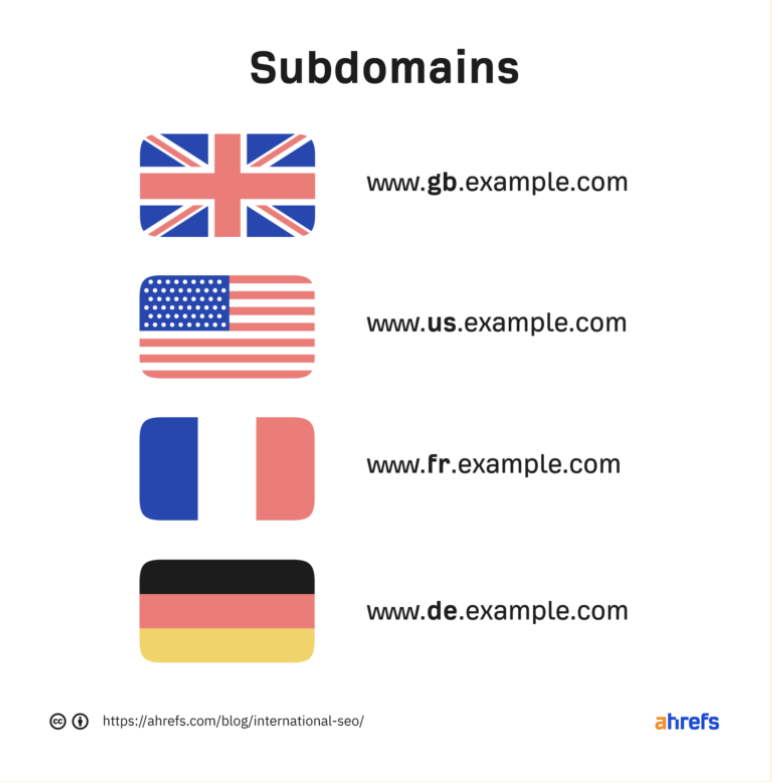
Subdomains are a popular choice for companies targeting very few regions since it’s like creating a whole new website from scratch. The more you have, the more websites you’ll need to manage.
| Pros | Cons |
| + Create customized naming conventions (unlike with ccTLDs) + Host each subdmain locally in the target region + Customize every page’s content and design + Set sitewide settings for specific global regions | – Requires you to track and manage multiple websites – Changes on the main site won’t transfer to the translated site – Requires additional crawling and indexing from Google |
Subfolders
Subfolders are the most popular option for multilingual SEO, especially for large websites. Instead of creating a whole new website, these allow you to section off a part of your existing website for each language.
The URL structure would look like yours
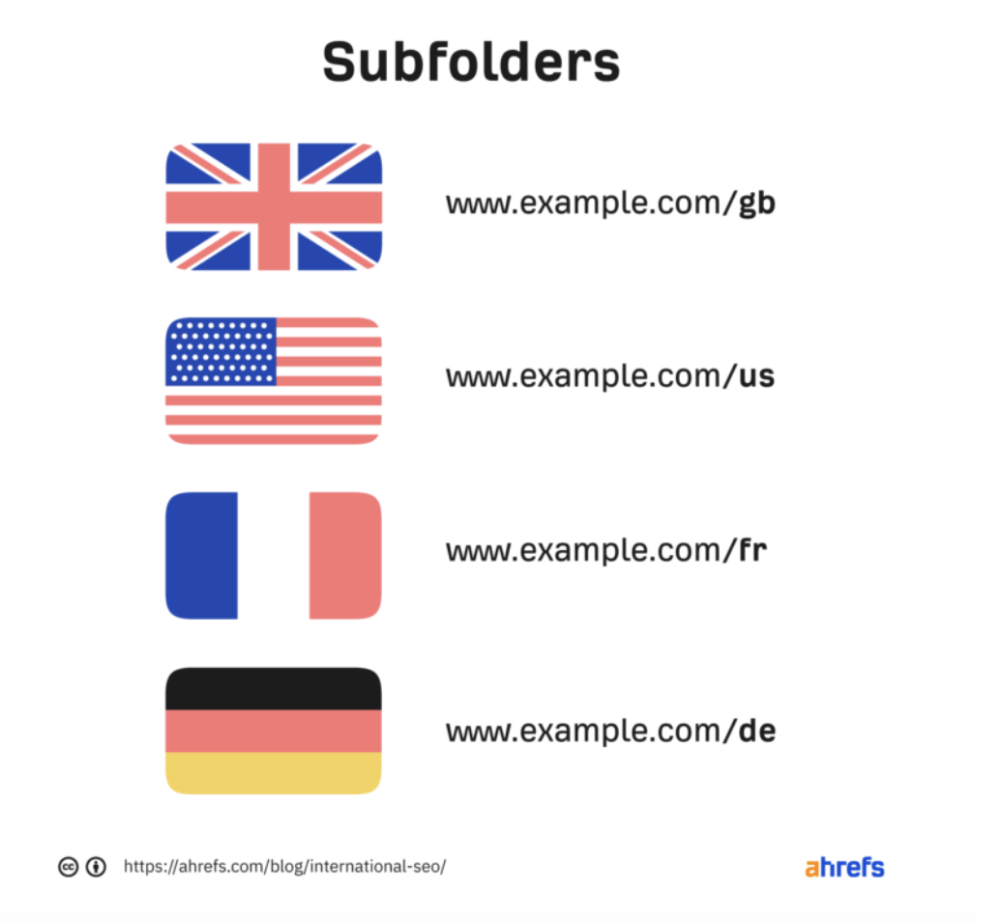
Wise and Canva both use this structure. For example, here are a handful of Wise’s international segments:
| Pros | Cons |
| + Keeps everything on one site + Can easily track and report on performance + Easier to manage and duplicate content hubs in different languages + Creates a cleaner and more user friendly site structure + Users can easily move to other pages if they land on the wrong segment | – Cannot easily replicate core pages for each language – May need to rely on a translation app for pages outside the translated content hub |
Country-specific domain
A country-specific domain (also called a ccTLD) contains an element of localization instead of .com.
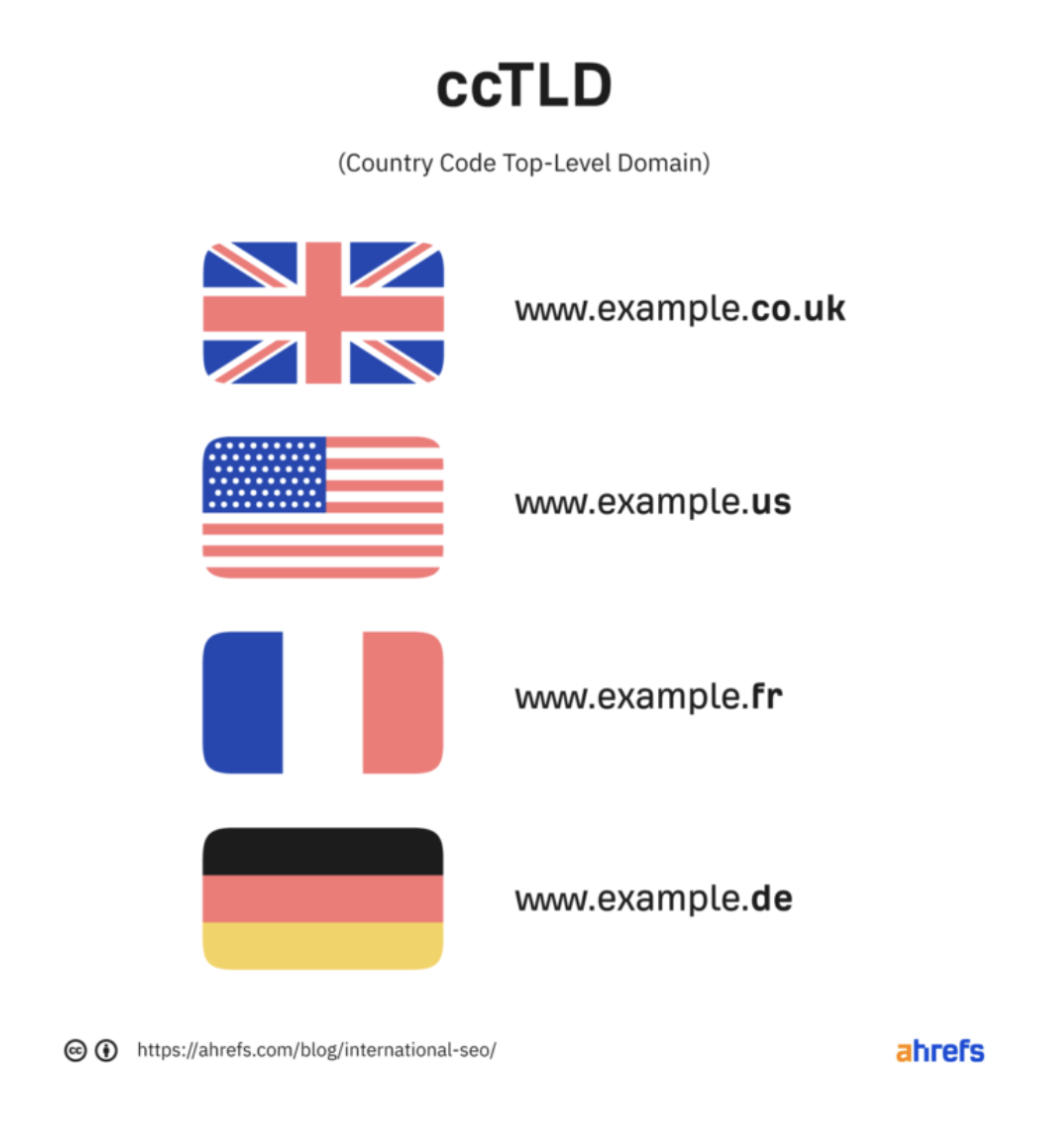
These domains are instantly recognizable by locals in the region they target and have some ranking advantages at a localized level.
However, they’re not that commonly used by global companies operating in multiple regions. This is because, like sub-folders, each domain is a separate website unconnected from your primary domain.
| Pros | Cons |
| + Locals recognize these domains the most and they’re more likely to favor them + Local ccTLDs can rank better for some local queries + The target country is immediately clear and may feel more comfortable to users + Such sites can be hosted locally in each target region | – You’ll need to buy multiple domain names – Your brand name may not be available for some ccTLD extensions – You’ll be managing multiple websites – The changes on one site won’t transfer to the other – Google considers each one a separate domain, and the strength to one won’t support the other |
5. Hire native writers and translators to create content
As tempting as it is to use AI to automatically translate your content, we’ve found the best results by hiring native speakers.
Machine-translated content poses high risks to your potential growth from multilingual search. From incorrect translation to missing nuance and localized information or the AI’s hallucinations gone rogue—or even not using your keywords and losing the optimization.
For this reason, it can take a lot longer to fix bad AI content than for a native speaker to handle the process start to end.
The ideal scenario is to hire a native speaker who is also skilled at writing or SEO. Hiring any translator is not enough as they often lack writing skills, SEO skills or both.
By extension, simply translating the words on a page is not enough.
You also need to meet search intent and capture the essence of what people in each market are actually looking for in a way that intuitively resonates with them. These nuances matter.
For example, let’s look at Canva’s resumé templates.
Here’s a snapshot of the page in French:
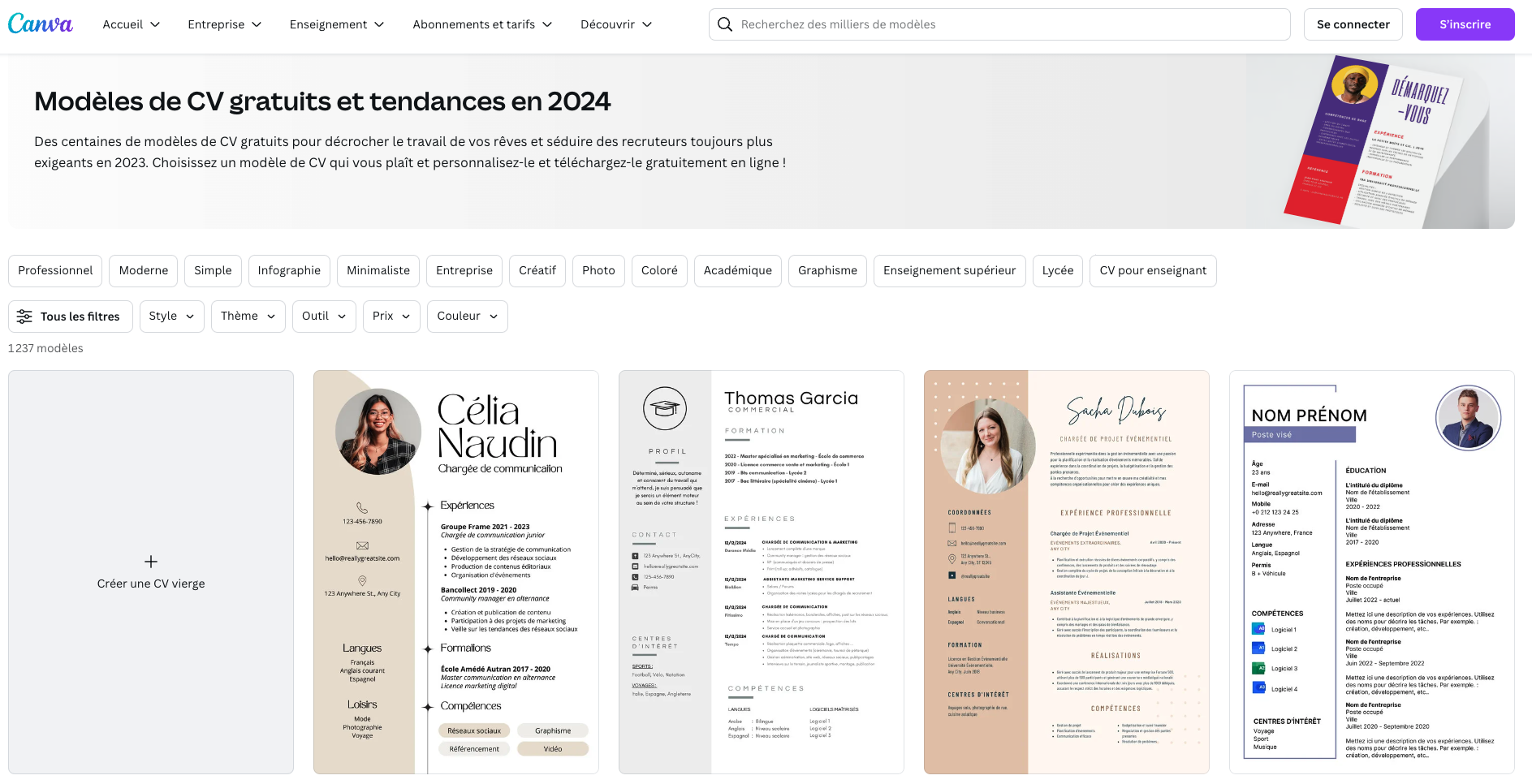
And here’s one of the page in Mexican Spanish:

It’s easy to presume that the same design templates can be replicated for different audiences. And to a degree, yes they can.
Both pages have the same layout and placement of core elements, such as the heading, intro copy, and template tiles.
And that’s as far as the similarities go.
Everything else from the language to the colors, shapes, and styles of the resumés is different. Even the names and images of the people on the resumés is localized to appeal to the specific market each page targets.
Just as Canva has modified their pages to provide an intuitive experience for each audience segment, you should consider the same.
A native speaker with writing and SEO skills will be able to spot such differences and improve the overall experience for your users far better than AI could.
6. Localize each of your pages and implement hreflang
Just as you adapt the front end of each page, there are also some elements in the code that you’ll need to adapt for each language as well.
The most important is hreflang tags.
These tags are added into the HTML code to tell search engines what the target language of the content is. It serves two functions:
- So search engines can display each page for the right queries
- So search engines can correctly understand the content of each page
As a rule of thumb, you should only target one language per page.
Then, use the hreflang tag to connect multiple pages that cover the same content in different languages.
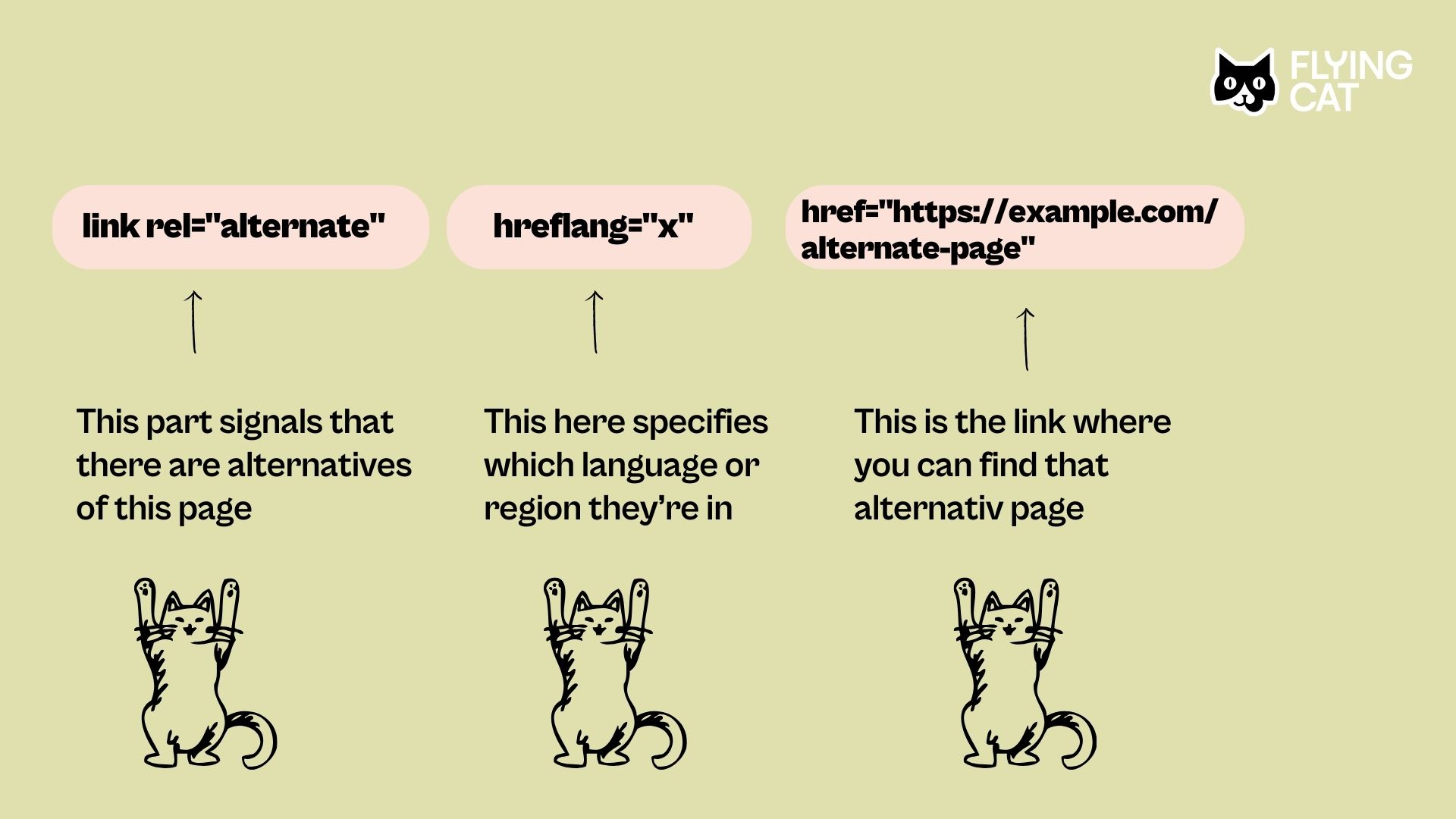
There’s a lot more to be said about hreflangs as they can be one of the most challenging elements of SEO.
I highly recommend you check out our in-depth post that covers everything you need to know from start to finish.
7. Adapt multimedia content for each language
If your content includes multi-media assets like images, audio files, or videos, adapt them to suit each market.
This is exactly what Canva did with their resume templates, for example. Making content feel relatable extends far beyond the words used.
There’s a look and feel that people in various parts of the world are used to. Adapting your images and design elements is a subtle way to make a webpage more intuitive for global audiences.
Getting audio and video files translated is not only more intuitive but also makes the content accessible to all audiences globally.
For instance, a visually impaired person in Spain will not be able to read subtitles on a video. If you do not have an option for them to listen to the content in their language, then the video is not accessible for all native speakers.
AI tools can save quite a bit of time and money in such cases. There are also some ways to improve SEO using AI.
For instance, you can:
- Use AI to pull a transcript from the video
- Use AI to do an initial translation
- Have a translator review and edit the translation
- Use AI dubbing to create a translated voiceover
- Use AI to add the translated captions
- Use AI to add the voiceover and fix lip-syncing
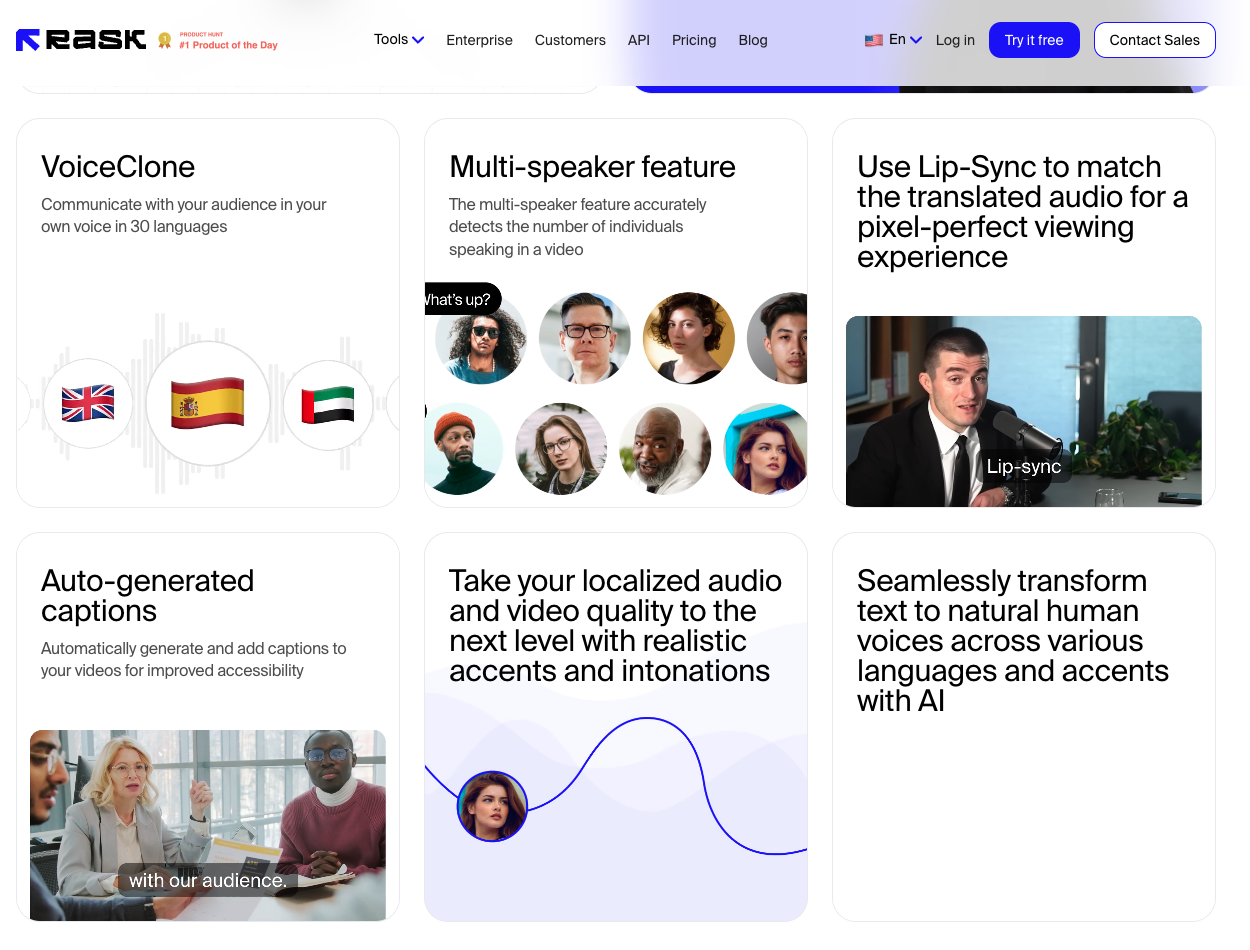
This way, you can add localized captions and speech to every audio and video file you upload without breaking the bank.
8. Build local links in each language from localized ccTLDs
Once you’ve translated your site structure and content, the final piece of the puzzle is to build localized links to each content hub.
Thankfully, you won’t need as many links in international markets as you may need in the US.
For instance, Canva’s multilingual SEO strategy generates 62% of its organic traffic yet only has 10% of the site’s backlinks.
It’s not just a matter of lower competition, but each link also goes further. Especially when you receive links from local websites that are all in the native language you’re targeting.
The best links to look for are:
- Localized with the country’s specific ccTLD extension
- Completely in the target language or dialect
- On pages about similar topics to yours
And let’s not forget internal links! Make sure you add these from your content in the same language to relevant pages in the same language or dialect only.
Pro tip: You’ll want to concentrate links for each language or dialect to its corresponding hub on your website. Don’t mix and match.
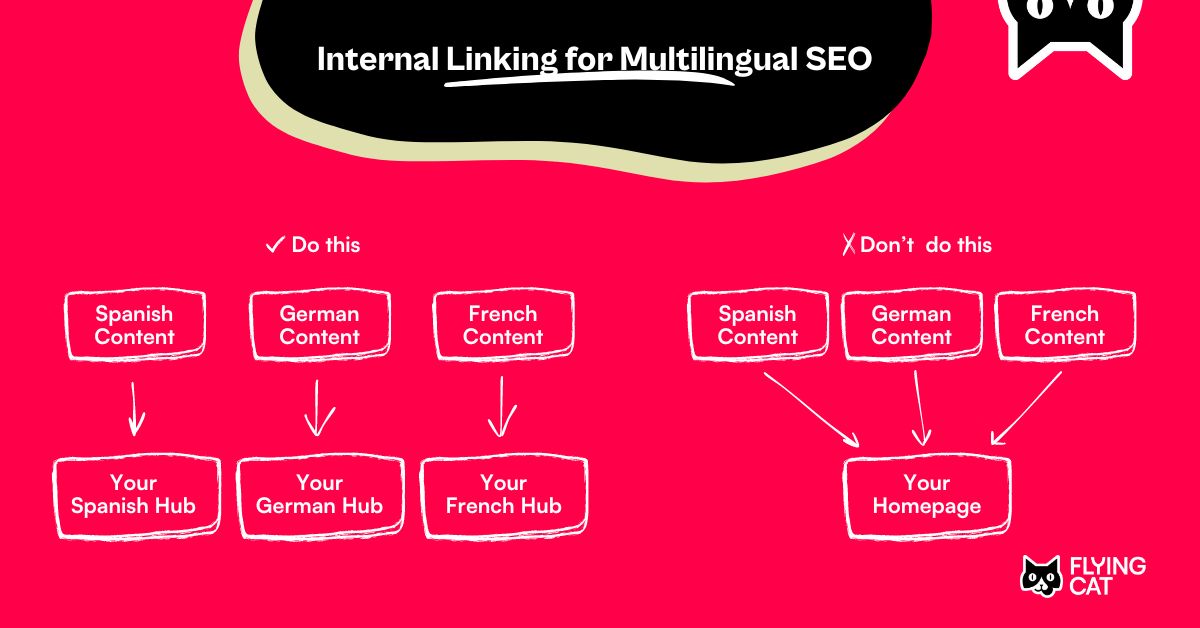
Final Thoughts
Multilingual SEO is a powerful way to expand your website’s reach and target new audiences.
Although targeting multiple languages presents some initial technical challenges, it can be very rewarding for the right types of businesses.
If you’d like a helping hand with any aspect of the process, let’s chat.
We have an expert team of native speakers in over 10 languages who can help you break out into a new market today.
Book a call
